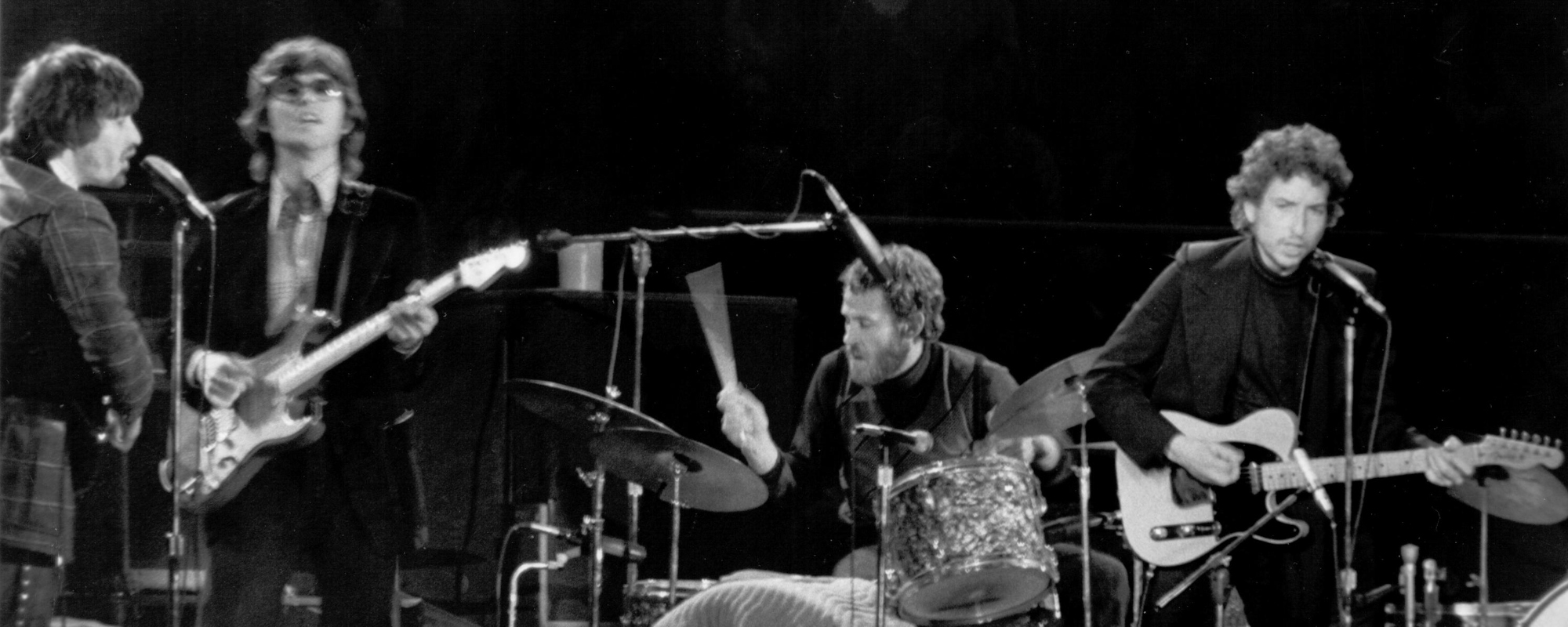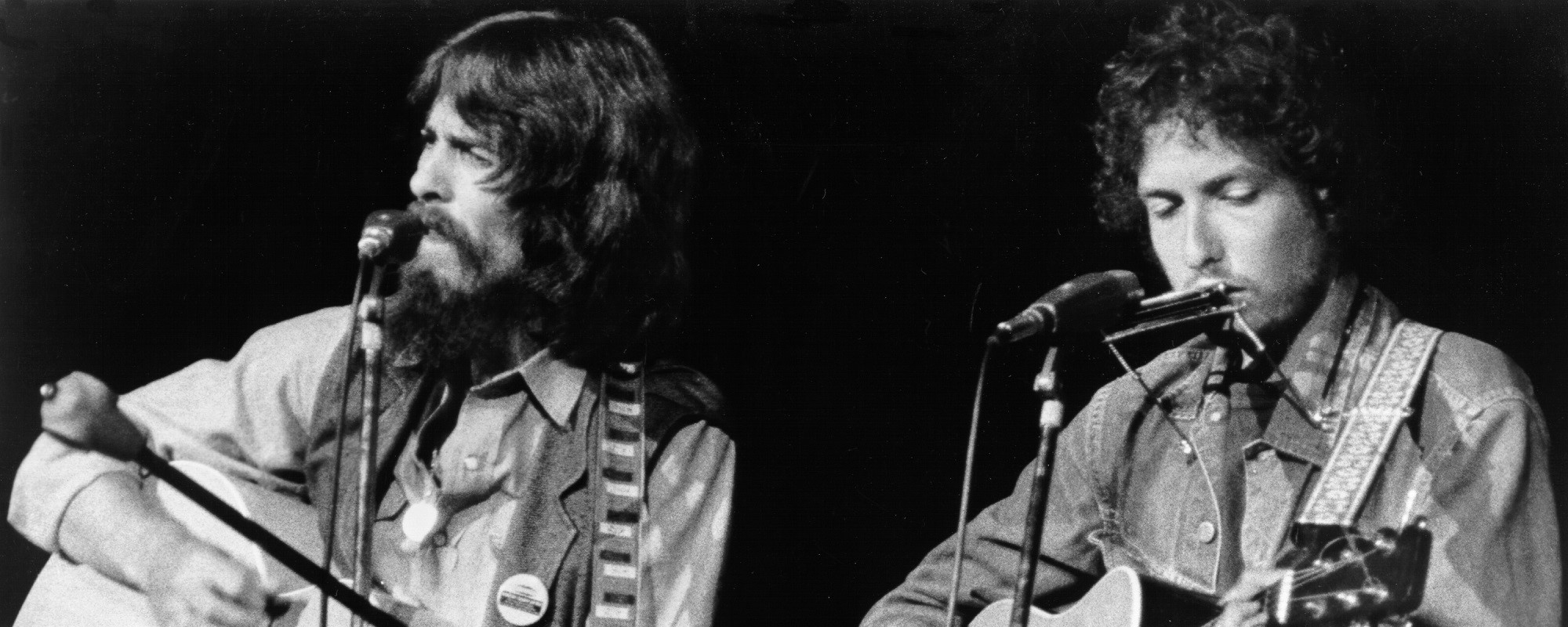Considering the success of the limited-scope Bob Dylan biopic A Complete Unknown, the filmmakers and performers have understandably hinted at interest at possibly doing sequels based on other eras of Dylan’s life. The time surrounding the making of his January 1975 album Blood on the Tracks would seem ripe for such a treatment.
Videos by American Songwriter
Aggrieved by a crumbling marriage and inspired by an unexpected new muse, Dylan created one of the most multifaceted, harrowing, honest depictions of a romance in turmoil. Fifty years later, scores of so-called “breakup” albums have been released in its wake. Blood on the Tracks still leaves them all playing for second.
Blood is Boiling
After many years steering clear of the limelight and concentrating on his budding family with wife Sara, Bob Dylan made the decision, circa 1974, to put his music front and center once again. In that momentous year, he recorded an album and bounded off on a tour with his old friends in The Band.
It was around that time Dylan also began the process of building a massive estate at Point Dume on the coast of Malibu. Unfortunately, the move to California seemed to eradicate the harmony he’d built in his marriage, as he and Sara started to come apart at the seams. His reinsertion into rock-star chaos didn’t help, as his wife didn’t find that world all that interesting.
Another key event from the period that played heavily into the creation of Blood on the Tracks occurred when Dylan began taking painting lessons from a man named Norman Raeben. Raeben’s tutelage on how a single painting could tell a story not just of its present, but of its past and future as well, informed Dylan’s songwriting from that point forward.
When he wasn’t touring or overseeing construction on his burgeoning estate, Dylan spent time in 1974 near his childhood home in Minnesota. There, separated from Sara, he wrote the songs that would appear on Blood on the Tracks. He recorded them in New York, and appeared ready to release the album in the final quarter of ’74.
But this story still had one more twist. Dylan wasn’t quite happy with the final mix, and he expressed this discomfort to his musician brother David Zimmerman. Zimmerman convinced Dylan to rerecord several songs from the album with musicians in Minnesota. The finished album would be a hybrid between the spare, hushed New York takes, and the fleshed-out, more forceful versions he laid down with his brother’s buddies.
Revisiting the Music of Blood on the Tracks
By muddying the narratives of the songs on Blood on the Tracks, Dylan managed to give us one of the clearest pictures of relationship turmoil ever delivered by any medium. Take opening track “Tangled Up in Blue”: We start at the end of the relationship, get carried away on a series of adventures and dalliances, and then come back around to the narrator wishing he could go back to the start. No matter what point of the story you’re experiencing, the raw anguish acts as an orienting element.
Dylan refuses throughout to indulge in any kind of one-sided diatribes. Even the angriest track, “Idiot Wind,” spreads out its venom to several targets before the narrator finally realizes he’s part of the problem as well. “Simple Twist of Fate” sets up as a wistful short story about a one-night stand, only to have the perspective changed in the final moments to reveal a heartache that will last a lifetime.
Even when he indulges in the plot intricacies of “Lily, Rosemary and the Jack of Hearts,” the complicated relationships at the heart of it make the biggest impact. The one happy tryst on the album is destined to end (“You’re Gonna Make Me Lonesome When You Go”), while Dylan reserves his most passionate vocals for an affair that’s irretrievably in his rearview (“If You See Her, Say Hello”).
Dylan has always refused to label the album as a play-by-play of his marriage, even as others close to the pair begged to differ. Ultimately, the whys don’t matter. What matters is Bob Dylan reinvented the love-gone-wrong song 10 times over on Blood on the Tracks, each track a marvel in miniature, adding up to an album’s worth of abandoned love.
Photo by Jay Dickman/CORBIS/Corbis via Getty Images













Leave a Reply
Only members can comment. Become a member. Already a member? Log in.